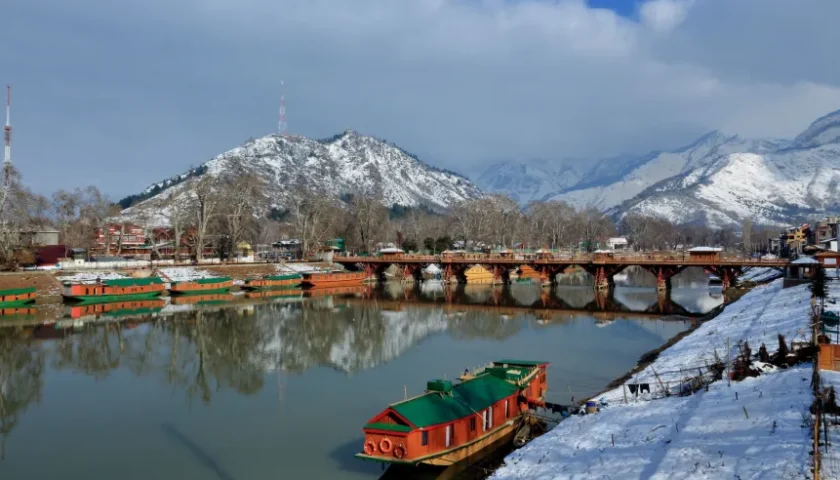Kolhama, a peninsular hamlet with a population of over 2,400 people and 350 households of fishermen, is dependent on the Wular lake for its produce of fish, water chestnut and nadroo (lotus stem). Abdul Rashid, sarpanch of the village, says the receding water level of the lake is affecting their livelihood.
“Dredging by the Wular Conservation and Management Authority (WUCMA) has been completed in some stretches of the lake,” says Rashid, lamenting that the main body of the Wular has gone dry. He says dredging work needs to be extended to more areas.
“There are no fish in the lake and people have started extracting sand (illegally) from the peripheries of the water body to make ends meet,” says Mohammad Rizwan, a postgraduate student. “The filth and muck from the Jhelum is drained into the lake, which adds to its degradation,” laments Abdul Rasheed.
At Laharwalpora, situated close to the lake, the water level is visible more than 500 m down the demarcated wall raised by the WUMCA.
Bashir Ahmad Handoo, a member of the Fishermen’s Union, says that over 2,300 fishermen from the village were dependent on the lake on their livelihood. The village has a population of over 7,000 people. Of them, more than 5,000 earn their livelihood from the Wular produce. “People live in poverty and the major solution to this will be raising the water level at the Ningli gate and dredging,” says Handoo.
The water level near the hillock of Baba Shukruddin on the northern end of the lake near Watlab has reduced to a few feet, explains Handoo. “The lake is dead mainly due to the filth flowing down from the Jhelum…. Wular is the abdomen of Kashmir, which remains blocked and will ultimately lead to a disaster,” he says.
Mohammad Ramzan Malla, a resident, points out that the receding of the lake has been going on for the past 10 years.
Bashir Ahmad Khosa, 55, has been earning his livelihood by fishing in the lake, but for the past over a decade, there has not been much income due to the low produce of fish.
Dwindling Wular Lake hits livelihood of fishermen




